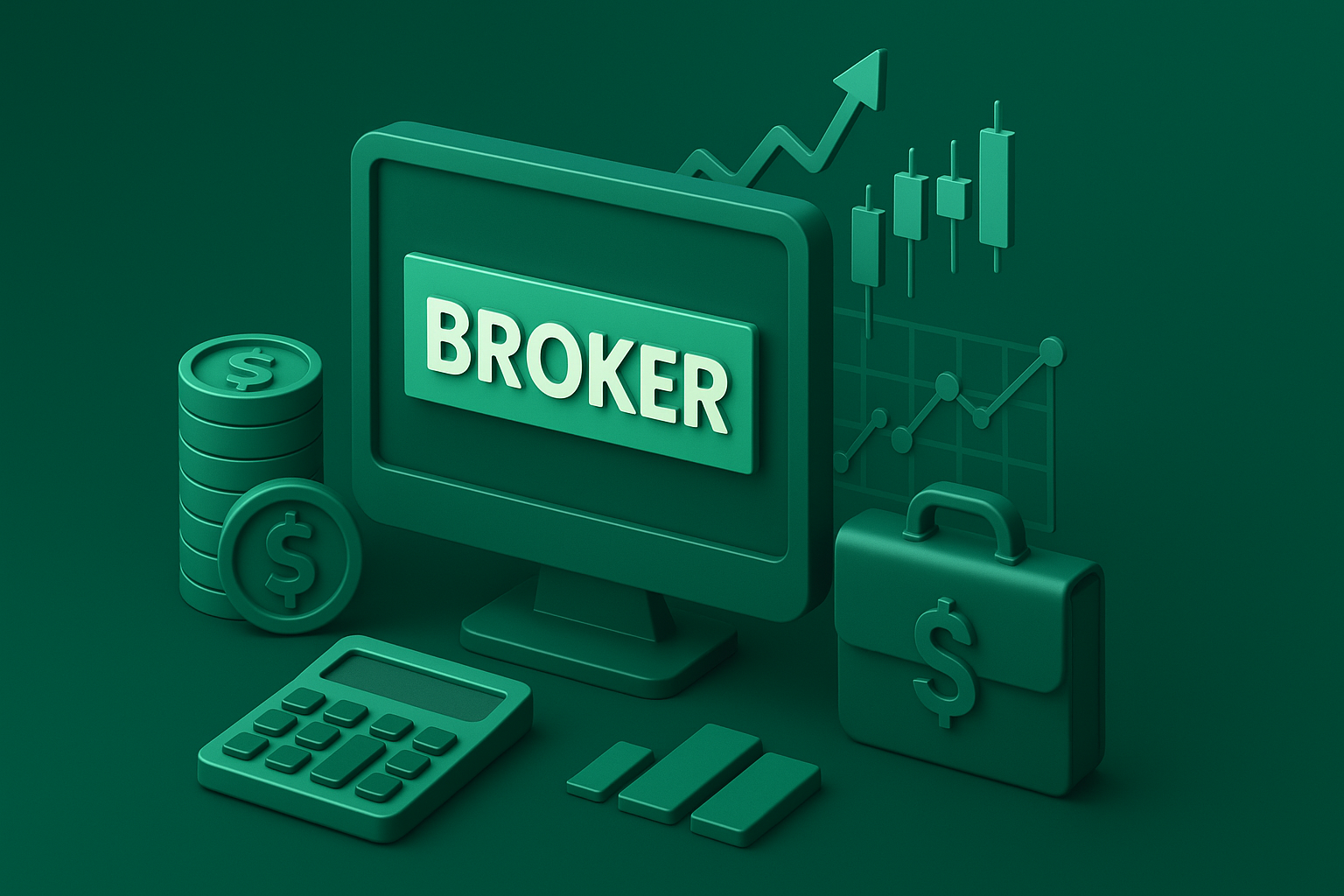Modern financial and real estate markets rely on specialized intermediaries to connect buyers and sellers efficiently. These services have evolved beyond traditional transactions, now offering digital tools, real-time market information, and compliance support. Professionals in this field help businesses and individuals navigate complex investments while maintaining regulatory standards.
Leading firms like Charles Schwab set industry benchmarks through innovation. Recognized as the #1 Overall Broker in 2025, they exemplify competitive pricing with $0 online stock trades and extensive mutual fund options. Such advancements give users unprecedented access to global markets while reducing operational costs.
The National Association of Realtors (NAR) supports real estate professionals with training programs and market analysis resources. This infrastructure ensures consistent service quality across residential and commercial transactions. Digital platforms now streamline everything from property searches to contract signings.
Key Takeaways
- Modern solutions cover financial and real estate needs through advanced technology
- Professionals act as critical intermediaries in complex transactions
- Tech improvements provide faster access to market data and trading tools
- Top firms combine award-winning services with cost-effective pricing
- Industry organizations like NAR maintain standards through education
- Digital integration enhances compliance and client experiences
Understanding the Role of a Broker
Navigating complex transactions requires expert guidance from licensed professionals. These intermediaries analyze trends, negotiate terms, and ensure legal compliance across industries. Organizations like the National Association of Realtors shape standards for MLS systems, balancing consumer protection with business growth.

Defining Core Broker Services
Modern intermediaries provide four critical services: market evaluation, deal coordination, regulatory oversight, and strategic advice. Real estate specialists use MLS platforms to share property data securely, while financial experts connect investors with global trading platforms. Both roles prioritize client success through tailored solutions.
| Service Aspect |
Real Estate Focus |
Financial Focus |
| Primary Tools |
MLS databases |
Trading platforms |
| Key Compliance Needs |
Property disclosure laws |
SEC regulations |
| Client Support |
Home valuation reports |
Portfolio analysis |
Exploring Broker Functions in Today’s Market
Professionals now blend technology with personalized strategies. Over 87% of market participants use digital tools for real-time pricing updates, according to industry surveys. Yet face-to-face consultations remain vital for addressing unique client needs.
Successful intermediaries distinguish themselves through specialized certifications and adaptive problem-solving. They turn volatile markets into opportunities by aligning trade execution with long-term financial goals.
Brokerage Services and Investment Strategies
Today’s investors demand platforms that merge diverse financial tools with actionable insights. Leading firms like Charles Schwab demonstrate this approach through integrated solutions combining investment products, real-time research, and flexible funding options. These services empower users to build customized portfolios while managing risk effectively.

Navigating Brokerage Options and Products
Modern platforms offer over 15,000 assets ranging from stocks to ETFs. Commission-free trades and low expense ratios make these products accessible to all experience levels. Three features define top-tier services:
- Multi-asset trading platforms supporting stocks, options, and fixed-income securities
- Automated portfolio rebalancing aligned with market conditions
- Transparent pricing models with no hidden account fees
Integrating Investment Research and Funding
Advanced analytics tools transform raw data into strategic advantages. Investors access earnings forecasts, sector comparisons, and risk assessment metrics. Funding flexibility enhances these capabilities through:
- Margin accounts with competitive interest rates
- Cash management tools for liquidity optimization
- Retirement account options with tax benefits
This synergy between research and execution enables informed decisions across market cycles. Educational webinars and strategy builders further support long-term investment success.
Leveraging Industry Resources and Market Tools
Professionals maintain competitive advantages by strategically using industry-specific resources. The National Association of Realtors empowers members through platforms like Facts.realtor, delivering critical market information and compliance updates. These systems help users adapt to shifting regulations while identifying growth opportunities.
Staying Updated with Latest Industry News
Digital hubs provide real-time access to legislative changes and economic trends. CRD.realtor offers microcourses for skill development, from contract negotiations to ethical practices. Over 74% of surveyed professionals report improved business outcomes after completing these programs.
Utilizing Digital Platforms and Research Tools
Advanced analytics transform raw data into actionable strategies. Platforms like MLS systems combine property histories with neighborhood statistics, enabling precise valuations. Three key benefits emerge:
- Automated research tools streamline comparative market analyses
- Interactive dashboards track regional pricing fluctuations
- Custom reports enhance client communication
These tools create efficient workflows while ensuring compliance with evolving standards. By integrating multiple information sources, professionals deliver tailored solutions that align with client objectives.
Broker-to-Broker Agreements and Collaborative Networks
Strategic alliances reshape how professionals operate in competitive markets. Formal partnerships create frameworks for shared success, combining resources while maintaining individual autonomy.
Building Mutual Value Through Partnerships
Industry leaders increasingly adopt structured agreements to streamline transactions. The National Association of Realtors offers templates clarifying compensation splits and referral terms. These documents reduce disputes by outlining responsibilities upfront.
“Clear partnership frameworks protect all parties while fostering growth opportunities,” notes a NAR spokesperson.
Collaborative networks deliver three core advantages:
| Partnership Element |
Business Impact |
Client Benefit |
| Compensation Agreements |
Predictable revenue sharing |
Faster transaction closures |
| Knowledge Sharing |
Enhanced market insights |
Better pricing strategies |
| Resource Pooling |
Lower operational costs |
Comprehensive service options |
Top-performing teams combine specialized skills through cross-industry alliances. Over 68% of real estate firms report increased referral income after joining professional networks, according to recent surveys.
Successful collaborations require regular communication and aligned objectives. Shared training programs and joint marketing initiatives often amplify these relationships. When executed well, partnerships transform competitors into complementary allies.
Mastering Broker Education and Professional Growth
Continuous learning drives success in fast-paced industries. Specialized education equips professionals with tools to navigate regulatory changes and shifting client demands. The Center for REALTOR Development (CRD) leads this effort through accredited programs accessible via digital platforms.
Accessing Certification and Training Opportunities
CRD’s microcourses and certification tracks address critical skill gaps. Key offerings include:
- Market analysis techniques for pricing accuracy
- Ethics training aligned with NAR standards
- Digital tool mastery for transaction management
Over 62% of participants report increased business revenue within six months of completing these programs. Credentials like the Seller Representative Specialist designation enhance credibility in niche markets.
Emphasizing Ongoing Education for Success
Mandatory continuing education ensures compliance with evolving laws. Weekly webinars and regional workshops provide updates on:
- Technology integration strategies
- Risk management best practices
- Client communication innovations
Top performers allocate 15+ hours monthly to skill development. This investment translates into faster deal closures and stronger client relationships. As market dynamics shift, adaptable professionals maintain competitive advantages through lifelong learning.
Effective Brokerage Management and Client Services
Leading firms achieve sustainable growth by aligning daily operations with long-term client objectives. This demands strategic oversight of business workflows, team performance metrics, and service quality benchmarks. Modern management tools help track everything from transaction timelines to client satisfaction scores.
Operational Excellence in Leadership
High-performing brokerages use automated systems to streamline document processing and compliance checks. Real-time dashboards monitor key metrics like average deal closure times and client retention rates. These management solutions reduce errors while freeing staff to focus on relationship-building.
Risk Reduction Through Proactive Strategies
The National Association of Realtors emphasizes preventive measures in its Risk Reduction webinars. Effective approaches include:
- Quarterly audits of transaction records
- Standardized checklists for regulatory compliance
- Client education programs about market risks
“Consistent processes protect both firms and clients from costly oversights,” states a NAR training specialist.
| Operational Element |
Client Impact |
Business Benefit |
| Automated Workflows |
Faster response times |
25% higher productivity |
| Feedback Systems |
Tailored service adjustments |
93% retention rate |
| Team Training |
Expert guidance |
Fewer liability claims |
REALTOR Magazine’s Broker-to-Broker Network shares case studies demonstrating how top performers balance business growth with personalized services. These resources help leaders implement best practices while adapting to local market conditions.
Exploring Investment Options and Funding Solutions
Investment portfolios now require flexible solutions that adapt to changing markets. Leading platforms like Charles Schwab offer products ranging from stocks to ETFs, combining diverse assets with competitive pricing. These options empower clients to build strategies aligned with personal financial goals while managing risk exposure.
Diverse Funding Models for Modern Brokerages
Modern funding solutions address varying capital needs through multiple account types and liquidity tools. Margin facilities and retirement accounts provide flexibility, while cash management services optimize available resources. Three key features define today’s top-tier platforms:
- Commission-free trades across stocks, bonds, and mutual funds
- Transparent fee structures with no hidden account charges
- Automated portfolio rebalancing based on market shifts
| Funding Model |
Client Benefit |
Business Impact |
| Commission-Free Trades |
Lower transaction costs |
Increased trade volume |
| Margin Accounts |
Leveraged investing |
Interest revenue growth |
| Cash Management Tools |
Improved liquidity access |
Higher asset retention |
Professionals guide clients through investment selection by analyzing risk profiles and market conditions. This tailored approach helps construct portfolios that balance short-term needs with long-term objectives. Integrated wealth management platforms merge these options into cohesive financial plans.
For business growth, brokerages utilize partnerships and alternative financing models. These strategies support expansion while maintaining service quality across client segments. The result? Solutions that evolve alongside both individual and institutional demands.
Embracing Digital Innovation in Brokerage Networks
Digital transformation reshapes how professionals connect with global markets. Cutting-edge tools now bridge gaps between investors and opportunities, creating frictionless access to real-time information. These advancements empower users to make data-driven decisions while optimizing business workflows.
Adopting New Technologies for Market Advantage
Forward-thinking networks integrate AI-driven analytics and cloud-based platforms. Over 79% of financial professionals report improved trade execution speeds through automated systems. Key innovations include:
- Mobile-first interfaces for on-the-go portfolio management
- Predictive algorithms identifying emerging market trends
- Blockchain solutions securing transaction records
| Traditional Approach |
Digital Solution |
Efficiency Gain |
| Manual research |
AI market scanners |
83% faster analysis |
| Phone orders |
One-click execution |
92% error reduction |
| Paper statements |
Real-time dashboards |
24/7 access |
Enhancing Client Access with Digital Tools
Modern platforms remove barriers through intuitive self-service features. Users now monitor investments, execute strategies, and access educational resources from any device. Three critical improvements stand out:
- Instant alerts for price thresholds and news events
- Customizable reports tracking portfolio performance
- Integrated chat support connecting users with experts
These network enhancements create value for both novice investors and institutional clients. By combining speed with security, digital solutions redefine what modern business relationships achieve.
Navigating Regulatory Terms and Compliance Measures
Regulatory compliance forms the backbone of trustworthy financial and real estate operations. Professionals must master industry terms and standards to protect client interests while maintaining market stability. This foundation ensures all transactions meet legal requirements without compromising service quality.
Understanding Key Regulatory Requirements
Licensing and ongoing education stand as non-negotiable requirements for professionals. Organizations like FINRA enforce transparency through tools like BrokerCheck, where clients verify credentials and compliance histories. The system displays employment details and disciplinary actions, promoting accountability.
Disclosure obligations mandate clear communication about fees, risks, and potential conflicts. Firms must document these details rigorously while auditing internal processes quarterly. NAR’s Facts.realtor portal helps businesses stay updated on policy changes through microcourses and compliance checklists.
Effective training programs ensure teams understand evolving terms like fiduciary duty and material facts. This knowledge helps brokers avoid penalties while delivering legally sound advice. By prioritizing regulatory information, professionals build lasting trust in fast-moving markets.
FAQ
What are the core services provided by brokers?
Professionals in this field facilitate transactions, offer market insights, and connect clients with tailored investment opportunities. Their services often include trade execution, portfolio management, and access to real-time data.
How do brokers adapt to current market trends?
Leading firms integrate advanced research tools and digital platforms to analyze shifts in demand, regulatory changes, and emerging opportunities. This ensures clients receive strategies aligned with today’s dynamic financial landscape.
What strategies help in selecting brokerage products?
Investors should prioritize firms offering diversified options, transparent fee structures, and robust research resources. Evaluating risk tolerance and long-term goals also plays a critical role in decision-making.
Why is industry news critical for brokers?
Staying informed about regulatory updates, economic indicators, and global events allows professionals to anticipate risks, adjust strategies, and provide actionable advice to clients.
How do collaborative networks benefit brokerage firms?
Partnerships with institutions like Fidelity or Charles Schwab expand access to exclusive deals, shared expertise, and innovative funding solutions, enhancing value for both parties.
What certifications are essential for brokers?
Credentials such as the Series 7 license, CFA designation, or CFP certification validate expertise. Ongoing training in areas like compliance or fintech tools further strengthens career growth.
What practices ensure effective brokerage management?
Top firms prioritize client communication, leverage automation for operational efficiency, and implement rigorous compliance checks. Regular audits and team training further reduce errors and build trust.
What funding models do modern brokerages use?
Institutions often combine traditional equity investments with alternative options like crowdfunding or private placements. Flexible solutions cater to diverse client needs, from startups to established enterprises.
How does technology improve brokerage services?
Platforms such as MetaTrader or Bloomberg Terminal streamline trades, enhance data accuracy, and provide instant market updates. AI-driven analytics also help predict trends and personalize client recommendations.
What regulatory standards must brokers follow?
Compliance with SEC guidelines, FINRA rules, and anti-money laundering laws is mandatory. Regular reporting, client disclosures, and ethical audits ensure adherence to legal and industry requirements.




